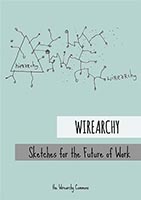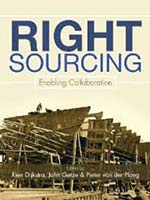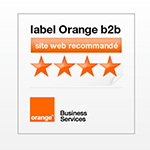 “Increasingly, strategic advantage for corporate institutions will hinge on privileged positions in relevant concentrations of high-value knowledge flows and the adoption of practices required to participate in and profit from these knowledge flows”.
“Increasingly, strategic advantage for corporate institutions will hinge on privileged positions in relevant concentrations of high-value knowledge flows and the adoption of practices required to participate in and profit from these knowledge flows”.
By these words, John Hagel, John Seely Brown and Lang Davidson define in The Power of Pull what they call the second wave of the Big Shift. Their impressive concept and research have already been thoroughly and brilliantly commented. Social business, or whatever we call it, has the potential to drive us through the necessary changes to harness flows of knowledge and take fully advantage of human collaboration and creativity.
Are we stuck in a document-based view of the firm?
But to fulfill this promise, thus to trigger the third wave of the Big Shift, and demonstrate:
“how institutions will have to learn to innovate at institutional level, truly transform themselves from the foundations outwards; how they will move from scarcity-thinking to abundance-thinking, from diminishing-returns models (based on knowledge stocks and experiences) to increasing-returns models (based on knowledge flows and learning); how the environments and participants and techniques necessary for this will manifest within and beyond the enterprise boundary”
as writes JP Rangaswami, we might need to challenge the foundations upon which business is built down to the core, if not even further. Indeed, to quote Dave Gray and Tomas Vander Wal from their book, The Connected Company;
“Connected companies are networks that live within other networks. To be effective in a networked world requires different ways of thinking and acting. It’s less about predictability and control, and more about awareness, influence, and compatibility”
and organizations becoming social businesses require a transformation toward connected ecosystems where employees, customers, suppliers and even competitors build value through knowledge sharing. At some point, we will succeed in redesigning processes to make them agile and adaptive, and will switch to adaptive case management. We can be able to foster collaboration in most organizational layers, even at the strategic level, where it would have the most efficient impact, if supported by the right technology. This would even lead us to be able to redefine the nature of work. But none of these will be enough to really shift from stocks to flows, as we will still get stuck in a document-based view of the firm.
An industrial revolution heritage
To a large extent, the flesh and blood of modern organizations isn’t made of hierarchies, of any production of goods or services, of any financial flows, of managers, workers and customers, or even of profit. Organizations are structured, operated and managed around discrete but concrete documents: contracts and patents. Evidence is, we are calling for flows in a world which is more and more leaded by stocks.
Contracts, like most of present organizational artifacts, underwent many changes along history, and differ from country to country, but most of the legal structure that today frames their enforcement was formalized during the industrial revolution. As you might guess, their history is as much complicated as is the legal domain itself, and is intrinsically linked to the evolution of our society. In The Transformation of American Law 1870-1960: The Crisis of Legal Orthodoxy Morton Horwitz described how not only the American legal system, but with it the legal history, evolved over time to conform to the evolution of the economical and political system. A few years before, Grant Gilmore had drawn quite similar conclusions in a seminal book, The Death of Contract, stating that contracts were a philosophical as well as legal construction built to answer needs from the growing world of commerce.
Toward collaborative contract building
Organizations, indeed, need formal and enforceable accessions to operate and grow. But the rigid intricacies of legal constraints which rule today’s businesses drive them at the exact opposite of the support and trust required to thrive as true social businesses. Trust flourishes on consensual agreements, not on rigid rules. Creativity sparkles from guided improvisation, not from hard-coded regulation. No Big Shift will ever happen without rethinking our pervasive contractual environment.
Pierre Bonnard, the French painter, used to get into the museum of Grenoble, and later in the Musée du Luxembourg, where some of his paintings were permanently exhibited, tubes of paint and brushes in hand, to “improve” them. He did that so routinely that French journalists invented the verb “bonnardiser” to describe the act of touching up an otherwise finished work. For Bonnard, institutional ownership didn’t impair his right to modify his work. Introducing collaboration at the heart of the contract building, allowing some “bonnardization”, is a first step toward a redefinition of contractual links. When interviewed for the Future of Collaborative Enterprise project, Greg Lloyd described such a possible mechanism:
“That’s where I think you really have to rethink what it means to do collaborative work with customers. More people should be participating in the draft. Let’s take the example of a beneficial suggestion, by a junior engineer, on the Metagraphics side. This would lead to discussion, and to an enthusiastic response from Boeing on the consequences, and ultimately to “ok, that’s a very good idea, it means that we’re going to shift the way we do things whatever. Let us discuss how that would shift our agreement in terms of resources and deliverables and things like that”, which in turn would lead to new drafts of pages.
if you have the ability to make that distinction at technology level, you can open the discussion more widely. And you can open participation more widely, because the junior engineer who says “I think we ought to do that” can make a draft change, but that draft change does not commit even the customer to accept it or Metagraphics to do it, until it’s been discussed, not only in the informal sense of closure, but in a particular case that’s actually a contract. You’re doing the collaboration in the context of the document which is the contract itself. And that is potentially a profound shift”.
Relationships’ intellectual property
Beyond an inherently and overwhelmingly formal nature, our contractual environment raises even deeper challenges. If contracts are considered as a set of premises and obligations for both parts, their founding principle, “pacta sunt servanda” depicts nothing but the fundamentals of a relationship. During the industrial revolution, not only have organizations structured themselves in a way which impedes the kind of flexible adaptation required today to enable knowledge flows, but by favoring the proliferation of legal constraints over the principle of good faith which characterized the elder notion of contract, they have captured its very essence to their advantage; a shift has occurred, from relationships between individuals, toward relationships between organizations.
Can we reasonably imagine social businesses as sustainably “owning” such fundamental relationships? Contracts are today mostly private intellectual property objects, owned by organizations, but if we agree on the need to restore trust and to put emphasis back on human creativity through networked flows of knowledge, what does such ownership mean? Couldn’t corporations take inspiration from publishing houses, and relationships’ ownership be granted by all stakeholders, according to subsidiarity mechanisms?
These are questions I have no answer for, and I am not even sure there is one. We are at the beginning of a new era, and many crucial interrogations haven’t even surfaced yet. But to reinvent themselves to successfully tackle an increasingly fast changing environment, organizations will need to challenge most of the concepts and models they today take for granted. Social business presents us with a credible and promising path, but time hasn’t come yet to give actionable answers. Let us focus on asking the right questions, to avoid getting stuck in some less than optimal “local” pseudo-solution.






There are several complexities to this post that I may be misunderstanding:
– the association of documents and a document-view of the organization with contracts. I tend to consider only a tiny fragment of documents as contracts
– the basis of contracts as a measure if trust. I would argue that contracts are a better indicator of distrust. e.g., Aside from what is in this contract, I do not trust the other parties to any claims and nor do make any claims, etc, etc.
– most significantly, the notion of flow of information versus documents as stocks. This last aspect considers documents as fixed and permanent. Technically, even a dynamic data source can be considered a document; what is fixed only depends on the current state or snapshot of the data. The downside, is that the practical use of documents, are as ways to refer to a fixed state, a stock, of information; e.g., “according to what’s in this document, ….” implies a fixed state that someone last saw.
By leaving the paper world, we know that documents themselves need not be fixed states. What tends to be fixed are checkpoints of agreement such as contracts.
I was trying to understand what the final statement from the post was: Are you asking if we still need contracts? Or need to alter them to account for changing states and flows?
Thanks for your remarks, Rawn.
I agree with you when saying than a tiny fragment of all documents are contracts. But contracts are the most structuring documents, which set the conditions according to which a large part of work is done: contracts with suppliers or customers (isn’t a bill a contractualization of a transaction), employment contracts, leases, labor agreements, insurances and policies…
Contracts and trust: evolution of contracts through history has, in fact, followed the path of least trust. Speaking of US/English common law, for instance (French law is, from my legal-illiterate point of view at least), before the Statute of Frauds was passed in 1677, contracts were merely verbal, and relied on the principle of good faith. Then, laws were progressively modified according to two axes; the first to ensure that the premise is effectively fulfilled, the other one to ensure than nothing more could be enforced. Trust was the founding reason for contracts, but they were slowly modeled by distrust.
Yes, documents are timestamped snapshots of data, checkpoints, as you say. And the value of these checkpoints resides in that we can consider them, either as bread crumbs, to allow us to trace back the evolution of thoughts, or as pitons, to allow us to get a common understanding of some evolving information until a new checkpoint could be formulated. But contracts, as they exist now, do not belong to any of these two categories, revising a contract being often at least as cumbersome as it is to draw it up the first time.
I don’t think we don’t need contracts anymore, as documents are fundamental artifacts for the two reasons I gave (there might be some other). But we need to alter them, and the way they are built, in several ways: to account for changing states and flows, of course, and also to account for the people who really carry them out. “I authorize the company to represent me, and the outcome of my role as part of the company, in the writing of contracts”, or something similar, is a kind of sentence I never saw written in any employment contract. Shouldn’t it be, as we praise for workers’ empowerment?